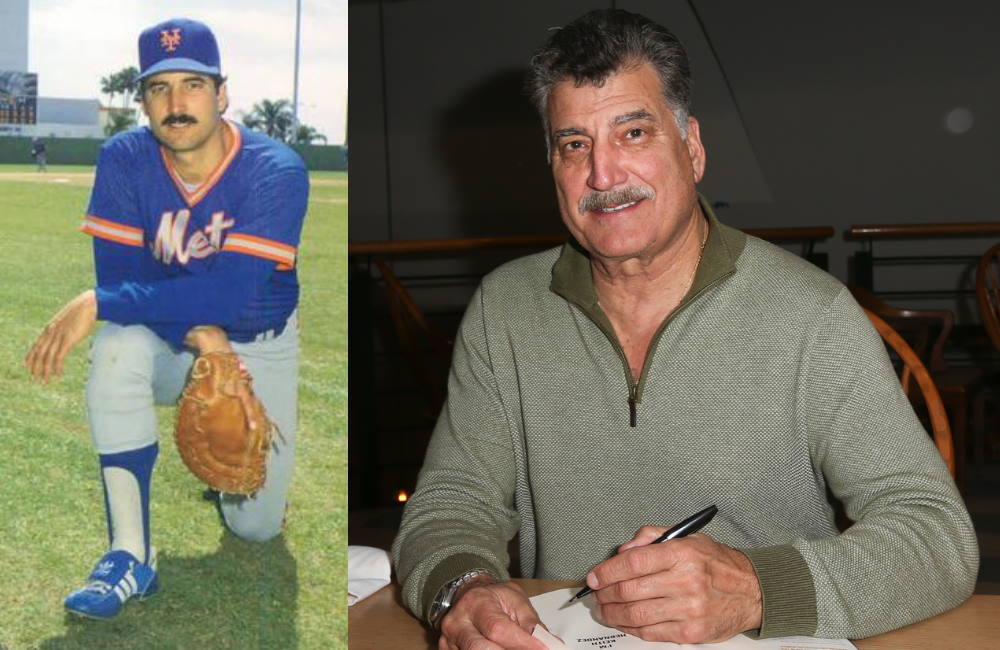Keith Hernandez played a key role in the success of the 1986 New York Mets, one of the most famous Major League Baseball teams of the second half of the 20th century. He also achieved many individual milestones, including winning 11 consecutive Gold Glove awards, making him one of greatest defensive players in baseball history.
He also shared a National League MVP award in 1979 with Willie Stargell of the Pittsburgh Pirates, played on two championship teams and retired with a lifetime batting average of .296.
Although most associate Hernandez with memorable moments of Mets baseball, he started his career and became a standout player with the St. Louis Cardinals before getting traded to the Mets in 1983. Although he is in the hall of fame for both the Cardinals and the Mets, he is not in the Baseball Hall of Fame.
Keith Hernandez’s Early Life
A native of San Francisco, Keith Hernandez was born on Oct. 20, 1953. He grew up in the town of San Bruno, just south of San Francisco. His father, John Fernandez, had been a prospect for the Brooklyn Dodgers and helped Keith and his brother, Gary, hone their baseball skills.
Hernandez played for Capuchino High School, but famously sat out his senior year over a dispute with the team manager about playing time. After graduation, he played one season in 1971 with the College of San Mateo. The Cardinals drafted him in the 1971 MLB draft, taking him in the 42nd round.
Despite the fact he sat out his senior year, the Cardinals gave Hernandez a $50,000 bonus, according to ESPN.
Keith Hernandez’s Early Career
In his first year, the Cardinals sent Hernandez to play in St. Petersburg, Florida, as part of the club’s Class-A Florida State League team. From there, he moved around the Cardinals’ minor league system, including stints with the Arkansas Travelers and Tulsa Oilers.
With the Triple A Oilers in 1973, Hernandez blossomed. He had already proven himself one of the best defensive players in the minors. But at Tulsa, his bat came to life. Hernandez posted a .333 batting average and .468 slugging percentage. He also posted an astounding .997 fielding percentage.
In 1974, the Cardinals again placed Hernandez in Tulsa. At the time, the Cardinals had Joe Torre at first base. And he remained productive at 32, having hit 287 with 13 home runs and 69 RBI in 1973.
So, it was back to Tulsa for Hernandez, In Oklahoma for 102 games in 1974, Hernandez hit .351 with 14 home runs. The Cardinals decided the time had come, and promoted Hernandez in August. He made his Major League debut on Aug. 30, 1974, going 1-for-2 against and knocking in a run against his hometown team, the San Francisco Giants.
Keith Hernandez’s Career in St. Louis
In 1974, the 33-year-old Torre hit .282 with 11 home runs and 70 RBIs. The Cardinals traded him in October 1974 to the Mets, where he played three more seasons. The move paved the way for Hernandez to become the starting first baseman.
However, Hernandez initially struggled, hitting .203 in April and May. The Cardinals sent him back to Tulsa, then brought him back in September. He hit better, raising his average to .250. More importantly, he secured his position on the big club. He never played in the minors again.
In 1976 he raised his average to .289. In 1977, he put it all together and provided what became a typical Keith Hernandez season, hitting .291 with 90 runs scored, 15 home runs and 91 RBI. In 1978, he won the first of 11 consecutive Gold Gloves, something no first baseman had ever done before.
In 1979, he led the league in batting average (.344), runs scored (116) and doubles (48).He and Stargell were named co-MVPs. He also starred on the 1982 Cardinals team that won an exciting seven-game World Series against the Milwaukee Brewers. In that series, Hernandez led the team with eight RBIs.
Keith Hernandez Traded to the Mets
In June 1983, the Cardinals traded Hernandez to the Mets for pitchers Neil Allen and Rick Ownbey. It seems a lopsided trade, but Hernandez testified in 1985 that he had developed a cocaine habit in 1980. He later said that may have influenced the decision to trade him. While his play remained steady, he said the drug “was like a demon in me.” The Cardinals decided to make a move.
Hernandez said he stopped using cocaine once he joined the Mets. Certainly, his level of play did not drop. Hernandez hit over .300 in his first full three seasons with the Mets (1984-1986), as well as .290 in 1987. He made the All-Star team in 1984, 1986 and 1987.
He also played in the legendary 1986 World Series, one of the best World Series of all time. Hernandez hit only .231 in that series, but drove in three runs in the deciding Game 7.
Hernandez played with the Mets through 1989. After a final season with the Cleveland Indians in 1990, Hernandez retired, having played 17 years in the majors. Since then, he has become a baseball broadcaster and a book author. He also famously starred in a two-part “Seinfeld” episode that included a parody of the “magic bullet theory” involving the assassination of President John F. Kennedy.
Many fans continue to advocate for his induction into the Hall of Fame. However, he is not in the hall as of 2022.


Leave A Comment